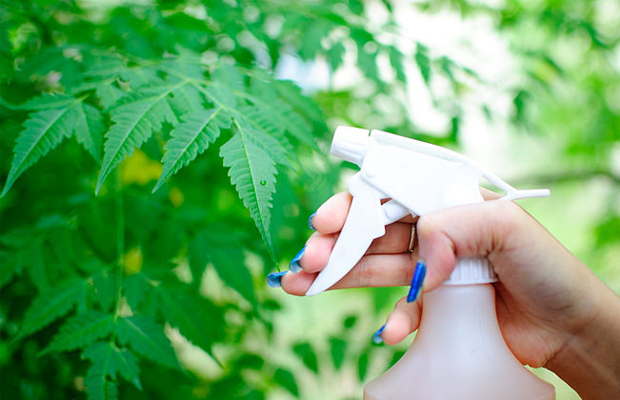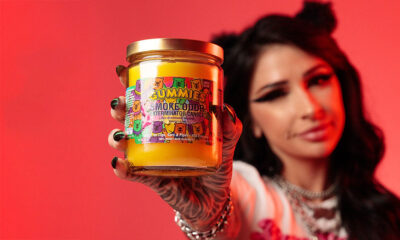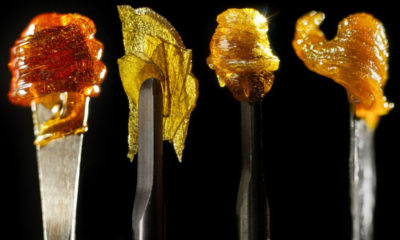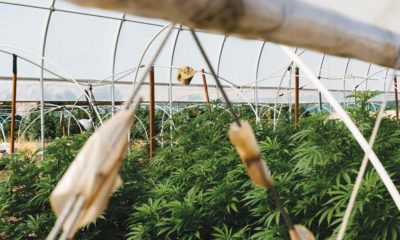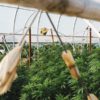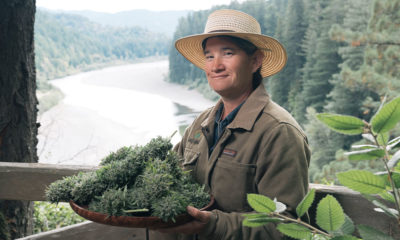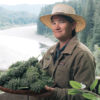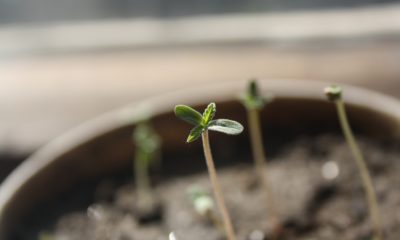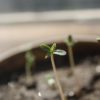Cultivation
Combatting Dust, Aphids & Tobacco Mosaic Virus
Cultivating cannabis requires a generous and well-rounded base of knowledge concerning how to maintain the health of a plant from seed to sale. That’s why it’s so important to discuss and dispel myths concerning what makes or breaks a successful growing area. There’s no doubt that the appropriate lighting, nutrients and care can make a huge difference in the outcome of a crop, but none of those things matter if there are contaminants in the environment.
The first thing needed for a quality grow space is a considerable level of cleanliness. Plants don’t like a dusty environment because it clogs the CO2 pores in the foliage, making the plant work harder for the necessary stuff for a green life. A good way to keep the dust down is some simple dusting of the area. Use unperfumed soap, water and a good, thick rag to clean the room and the space around the plant — not the plant itself. For complete protection, some like to use anti-bacterial soap and that works great, too. Wipe down everything, including whatever gardening utensils that have been used.
Keeping the area free of contaminants in the air like dust will minimize the chances of mold or fungus growing in the environment. A dust-free area lends itself to preventing insect infestations, since most insect eggs are small and light enough to be carried around as particles.
Whatever machinery being used, such as fans or pumps, will also last longer if they’re clean. Dust can weasel its way into everything and most things used in a hydroponic environment have many moving parts. When those parts get dirty, they stop working over time. This is something many growers don’t want to happen in the middle of a growing session. It’s all about preventative maintenance, to circumvent any problems.
In every environment on earth, there are insects. Some are good, but when it comes to plants, most are bad. The first step in keeping the area free of infestations is a tightly-controlled air intake. If using air from the outside (or from another room), make sure it’s filtered. A run of the mill furnace air filter works great. They’re usually pretty big, but there’s no need to use the whole thing. It can be cut down to the necessary size and stuck over the intake hole with some good, old fashioned duct tape.
All it takes is one aphid to start an infestation and aphids breed in terms of hundreds or even thousands of offspring. Once started, it’s only going to get worse, so jump on it. If one little winged critter is sighted in the growing area, get the insecticide. While some people will poo-poo you on using insecticides, sometimes they have to be used — especially in this case. There’s almost no choice because one aphid can mean the death of an entire crop in just a matter of days. Luckily, it doesn’t take a lot. Just a a second or two of spray will do the trick.
If these pests get noticed too late and they’ve already taken over the growing space, the answer is a bit more complex and requires a bit more work. The first thing to do is close the opening to the grow area and run for the insecticide. Start spraying at the furthest point from the opening and work your way out. An hour later, the majority of the critters will be dead, but not all. To get all of them, there will need to be some digging, scraping and wiping.
Insects such as aphids like to burrow into any tiny crevice, including the uneven and porous surface of peat and perlite growing medium. It will be necessary to remove at least an inch from the top of the growing container and seal it up in a plastic garbage bag. But, don’t replace the growing medium yet. The next step is to scrape any smooth surfaces to remove the eggs and droppings the critters have left behind. After that, grab a rough rag, some insecticidal soap and scrub everything. Aphid eggs are tough and will probably be stuck to every surface. After that’s done, back out of the growing area, spraying the insecticide again. An hour later, come back and replace the top layer of growing medium. Make sure the medium is moistened before laying it on with pure, PH-balanced water. It should be business as usual now, although it might be necessary to spray again.
Another potential obstacle is the tobacco mosaic virus (TMV), the bane of every tobacco-smoking grower. TMV shows up as a brownish spiral rash on the foliage and buds. As the name suggests, it’s a product of tobacco smoke in the growing area. Once there, it can’t be gotten rid of without cutting it out.
What happens is the smoke particles irritate the pores on the foliage. These irritations then rot, giving the brown appearance. The only thing that can be done once the plant is effected is to take a hit in growth and trim the leaves that show the spot. I’ve used a hole punch normally used for paper and it worked great. From that day on, there was absolutely no smoke in my growing area.
Taking proper care of cannabis plants means tending to the details that promote strong, healthy, potent and aesthetically-pleasing plants. While selecting quality seeds, choosing good strains and different growing techniques is paramount, cultivators must take care to pay special attention to the environment the plants are grown in as well.
Do you grow cannabis? Share your best tips in the comments.



